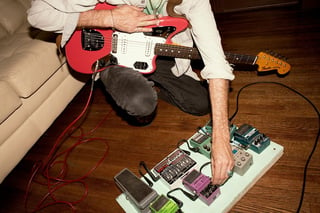
An electric guitar’s tone and expectations of performance is a result of the sum of all its parts working together, much like a car. A Yugo and a Mercedes will (hopefully) get you from point A to point B, but the manner, quality, and how long you can count on them to do so are what differentiate one from another - just like an electric guitar. We need a way to get our weak electric guitar signal to the amplifier for it to do its thing and rely on instrument cables to do it. There are many competing brands out there of varying price and claims to excellence. Often an instrument cable is an after-thought of a guitar/amplifier purchase. However, it’s a crucial component of an electric guitar rig. Instrument cables fall into the accessory category, but they’re more like a lifeline in some respects. So, why do superior cables make a difference?
By “superior,” I’m referring to an instrument cable’s ability to efficiently conduct the electrical impulse from your guitar and to do it with minimal affectation of your tone - not how close to indestructible they may be! The quality of the copper wire in the cable, solder, connectors and shielding are features that set instrument cables apart from one another. 100% oxygen-free copper, high silver-content solder, and gold-plated connectors all contribute to better conductivity. Shielding in the form of an outer jacket, preferably of braided wire, and, perhaps, metalized Mylar film, is essential to isolate against radio frequency interference or RFI. The 60 cycle/second hum of alternating current or AC is also a potential problem that the shielding in superior cables addresses.
The higher quality cables make a difference in the long run (pun intended). As your cable length increases, so does the amount of tone-sucking impedance. Impedance refers to the resistance electricity encounters while traveling along a conductor. After 25ft or so, this is noticeable in the form of diminished high frequencies, volume… basically it can sound like a moving blanket is draped over your speakers! Take into account that you might have some pedals inline between your guitar and amplifier and/or send and return cables if you’re using an effects loop, and you can see that the cumulative length can add up. Consider: best-case scenario a 10ft. instrument cable, the sum of 6 inch pedal connectors depending upon how many pedals you may have at your feet, a 20ft. send and 20ft. return cable and you can see how the length adds up. Even with line buffers/drivers superior cables do make a difference. Hear for yourself and bear in mind that it’s the entirety of your electric guitar rig, connected by instrument cables that enable you to get maximum performance and contribute to superior tone.
